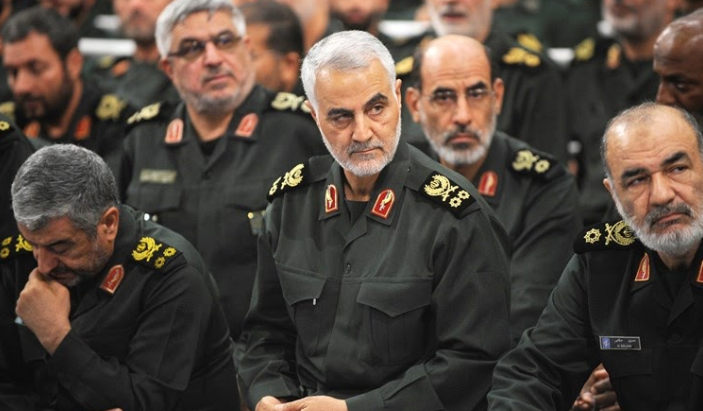The US-Iran Conflict
February 25, 2020
The US-Iran conflict. For the last few weeks, it has captivated the news, but nobody seems to understand what it actually is. Most people know the basics: a general was killed, Iran bombed a few military bases, and tensions are high. But what actually is it? What is going to happen? One thing is for sure: you can step away from the panic button.
So what actually happened? While there are lots of different versions of the same story flying around, this story will try to stick with the facts. On January 3, 2020, President Donald Trump authorized and put into action a plan to use a drone strike to assassinate Iranian Quds Force commander Qassem Soleimani. Soleimani was on a trip and American intelligence confirmed when his Cham Wings Airlines A320 had landed at Iraq’s main airport, while four American drones came into position overhead. The drones had clearance, as this airport in particular houses many U.S. troops and equipment. Iraqi airspace is almost completely controlled by the U.S. America had placed two spies inside the airport that delivered exact information as to what was going on on the ground. As Soleimani and a few other officials in the Iranian and Iraqi military climbed into cars in the convoy, the CIA honed in on the cell phone signals of the occupants. This information was used to confirm the identities and exact locations of the targets. Then, just after 1:00 am, the drones launched at least two highly-advanced missiles and an international controversy between some of the world’s most powerful nations was started.
The Iranian response to this aggression on the part of the United States has, so far, been quite mellow. Iran has launched ballistic missiles at two Iraqi military bases housing U.S. troops (not much harm was done). However, the response shows a willingness to deescalate, as the attacks were coordinated to minimize casualties and damages to U.S. equipment. The attacks happened at a time that few U.S. soldiers would be moving about the base, and both bases were warned of the strike nearly six hours in advance. This is being seen by experts as an attempt to back down while still defending the honor of the country. Iran has also made several public statements, telling America that the strikes were a “warning shot” and that Iran will wait to strike back more until a time “where it will hurt the most” according to top officials of Iran’s military. Iran also shot down a Ukranian airliner, and it has recently been confirmed by the Iranian government that the missiles were shot by Iran by mistake, after several days of denying that Iran fired the missiles. The hearts of the Falcon Press staff go out to the families of the 176 victims of Ukraine International Airlines Flight 752. Overall, it is unlikely that Iran will retaliate in a more significant way, as America is a military power that simply isn’t worth messing with.
The killing of a top Iranian General was, in a nutshell, not the smartest choice on behalf of America’s leaders. This time, the consequences don’t seem to be severe. Iran is ready to de-escalate, and it seems that so far, America is ready to accept that offer. By no measure are the two nations allies, but it seems for now there will be peace. But what about next time? If America is electing leaders that start wars without preface or sudden aggravation, what does that say about the voters? What we need in American governing is deep, structural change, but that has to start at the ground level, with voters. And if America can’t even elect sensible leaders, then how are we going to achieve that?















